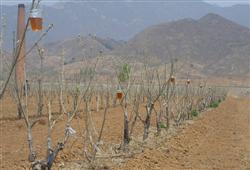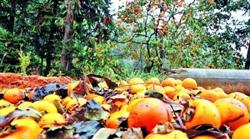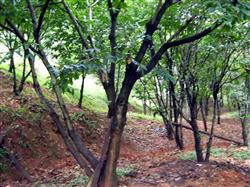How to manage young chestnut trees well

How to manage young chestnut trees? Please introduce the methods for young chestnut trees to be managed with reference to the following methods: 1. Management after grafting: after the scions of newly grafted young trees survive, they should first remove the sprouting tillers on the rootstock so that all nutrients are concentrated on the new shoots; high-grafted chestnut trees can properly retain part of the sprouting to disperse the tree nutrients, and when the new shoots grow to 20-30 cm, combine with the wind-proof pillar to get rid of all the sprouting. The second is to tie the wind pillar, to insert skin abdomen to connect the surviving scion, and the new tip can be directly tied to the living prop; for the scion survived by blocking the skin, a stick 70-80 cm long and 1.5-2 cm thick should be tied to the rootstock, and then the new tip should be tied to the stick. While binding the new tip, loosen the interface binding object by the way to avoid the new tip breaking in the shape of a gourd. The third is to pick the heart, when the new shoot grows to 40-50 cm, remove the heart from the semi-mature leaf, and remove the top 2 leaves (pay attention to keeping the petiole); when the new shoot is full of male flowers, pick the heart from 4-5 leaves above the male flower section (the method is the same as above) to promote new shoots. 2. Summer pruning: ⑴ pruning: young trees growing upright can pull branches at an angle of 40-50 degrees from germination to leaf expansion. ⑵ sprouting: the mother branch of a weak tree is lack of nutrition, so it is difficult to form female flowers. Erase the weak branches and weak buds at the base of the mother branches, so that all nutrients are concentrated on the full buds to form female flowers. ⑶ de-sprouting: remove the sprouting tillers from the main and lateral branches of the adult tree, retain part of the sprouting tillers where there is space, and remove the heart to remove leaves to promote the growth of branches. 3. Summer pressure green manure: in summer, the green manure and weeds are applied under the tree plate to increase the soil organic matter. Green manure weeds can also be covered under the tree plate. 4. Foliar topdressing: spraying 0.3% potassium dihydrogen phosphate + 0.3% active boron once at the early flowering stage and full flowering stage of Chinese chestnut, increasing leaf photosynthesis and reducing the rate of empty canopy. 5. Pest control: in the chestnut orchard where the ⑴ chestnut red spider is serious, the mite death rate is 2000 times + azithromycin 2000 times in the middle and late May, and 2000 times in the first and middle June. ⑵ wood-scrawled inchworm is one of the main pests that harm the leaves of Castanea mollissima because of its large food intake and strong drug resistance. In the first and middle of June, cypermethrin was sprayed 1000 times + cypermethrin 2000 times when the inchworm was 1-2 years old. ⑶ for the prevention and control of beetles, planting forage grass under trees, spraying pesticides after beetles are unearthed; new grafting and planting young trees, covering scions and upper trunk with plastic bags to control leaf buds damaged by beetles and gray weevil beetles; hanging sugar and vinegar cans, using water, sugar, vinegar and pesticide 10-position-3-position-1-place-0.3 to treat good sugar and vinegar solution, hanging on trees, it can trap and kill beetles and peach borer adults at the same time. Click to get more chestnut planting techniques click to get more fruit planting techniques
- Prev

How to prevent and cure persimmon fruit drop?
How to prevent and cure persimmon fruit drop? Please introduce the prevention and control methods of persimmon tree fruit drop is caused by physiological imbalance of persimmon tree itself and fruit drop caused by diseases and insect pests such as anthracnose or persimmon stalk insects. To prevent and control persimmon fruit drop, one is to configure pollination tree varieties, and pollination trees must be planted or carried out.
- Next

How to manage Chinese chestnut in summer?
How to manage Chinese chestnut in summer? From July to August, the fruit development of Chinese chestnut is in the expansion stage. It is very important to do a good job in the application of strong fruit fertilizer, mid-tillage and weeding, pest control and summer pruning in time. Fertilizing and weeding and applying strong fruit fertilizer is the second topdressing for chestnut trees. First ten days of July.
Related
- Moge, come on! The staff of the peasant association in the producing area of cantaloupe were frightened when the crowd gathered.
- Causes and Solutions of low Fruit setting rate of Apple
- Symptoms and control measures of passion fruit virus disease
- Fruit growing lesson: how do apple orchards keep high yields?
- Can you build orchards in the mountains? What are the pros and cons?
- How to manage the coloring period of Crisson grape?
- This paper introduces the processing technology of two kinds of fig products.
- How much is a month for retired teachers in rural areas by 2020?
- How can strawberry planting increase sugar content? We should pay attention to management in many aspects.
- What are the cultivation techniques on how to improve the yield of golden fruit?

